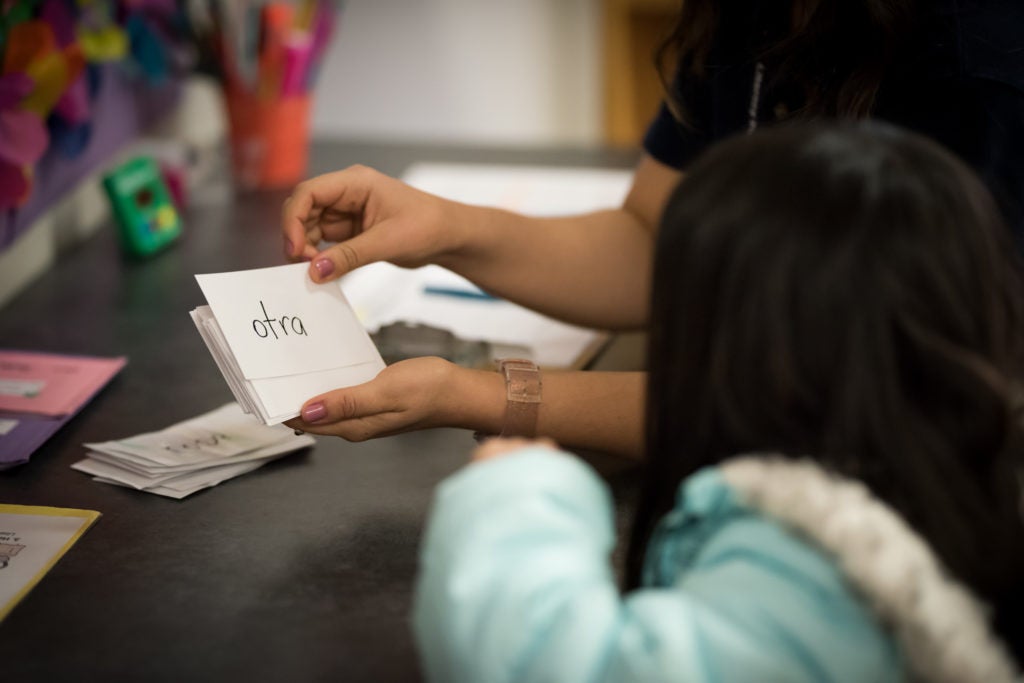By Gillian Pace, 2019-2020 Literacy First Tutor

Through the past year of tutoring, my understanding of reading instruction has improved tremendously. Before I learned about Literacy First, most of my knowledge came from personal experience. My memories of early literacy are reading with my parents or little brother. I didn’t have any formal knowledge of reading instruction. All I knew was that reading was important to me from a young age. When I decided to become a literacy tutor, it was because I wanted to help more kids find the same joy in reading that I had. But I didn’t have the tools to do so until I joined the Literacy First program.
Through my work, I have learned that there is so much more to reading than I expected, especially from the perspective of the teacher. Teaching a child to read is a very individualized process, and I was lucky enough to get to work with each of my students one-to-one. I had time with them on a daily basis and they had my full attention. This helped me grow my relationships with them and understand them as unique people and learners. Each of my students came to me with a different history and relationship with literacy, so they each deserved their own approach.
Literacy First gave me the resources to work with: lesson plans, ideal language, and weekly assessments, and the established structure of the program gave me a strong starting point with my lessons. Then, once a student was adjusted to our routine, I could look at which parts they responded to the best, and where they needed more support from me. This system was incredibly useful. It detailed every skill we used as a building block to literacy. Each one of those skills could be given more or less attention on a given day, depending on the needs of the student.
Because Literacy First is such a well-established program, many of my students’ needs had already been seen before in others. I could describe a situation with a student, and my Campus Leader or Supervisor would have ideas for me based on their experiences. Many of the little changes that I considered had already been used (and used effectively). When I practiced a passage with a second-grader, I separated and repeated the sentences as necessary. I used a different method with each of my students; for example, one of them loved to teach me. So I chose stories that he would enjoy, asked him questions about his knowledge, and let him “teach” me our vocabulary words. When I engaged him in our work like that, he was more energized and he read with more expression because he was invested in what we were doing.
That engagement with each of my students was easily one of my favorite parts of tutoring. I got to understand the mechanics of reading instruction as well as how to combine that with an approach that I could tailor to each student. By doing that, I felt that I was following and honoring all of Literacy First’s methods and using that structure to the advantage of each student.
